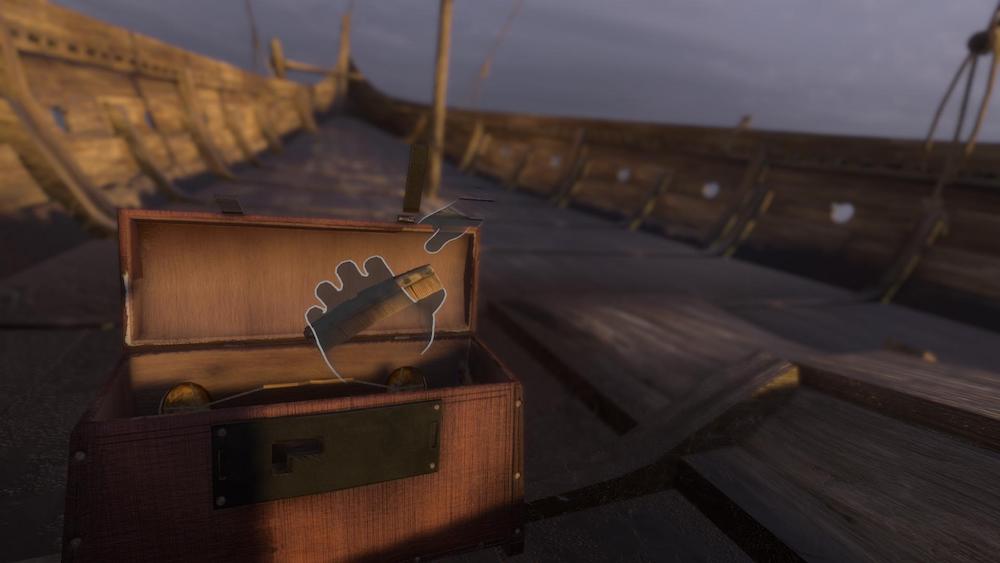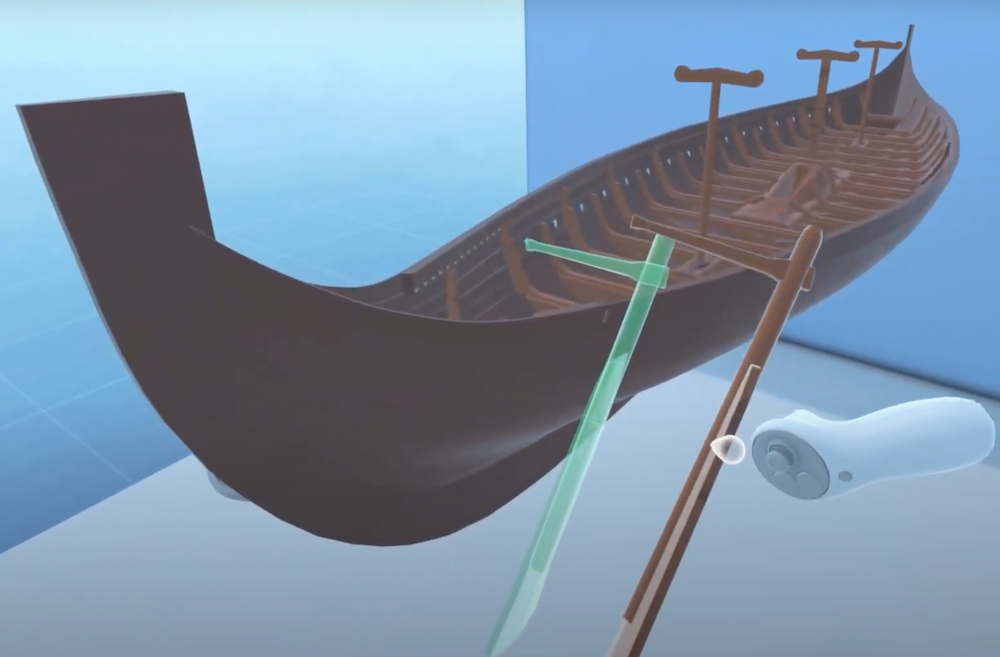1.
Introduction
The
Virtual Viking Longship Project (VVLP) explores and tests strategies for integrating undergraduate student learning and labor in the development of long-term Digital Humanities (DH) research projects. Combining the strengths of two leading liberal arts colleges with the multidisciplinary affordances of virtual reality (VR) technologies, the project aims to create an immersive VR experience for visualizing the social and cultural roles of a Viking-Age longship by cultivating deep competencies in spatial computing within the context of a liberal arts education. This paper will report the interim findings of our ongoing research project, including prototype VR experiences, public humanities collaborations, and the curricular and co-curricular models we have developed that allow undergraduate teams to pursue multi-year research projects with an evolving roster of students.
2.
Background
At the heart of a liberal arts education are its communities of inquiry and practice. Traditionally, these communities have been places where close mentoring relationships between faculty and students have been formed; where broad and enduring questions of human meaning, value, and purpose are discussed; and where project-based learning promotes critical thinking, fosters deep inquiry and analysis, and hones written and oral communication (Seifert et al. 2008). But what will these communities of inquiry and practice look like after the profound disruptions and dislocations of the early 21st century?
The question is timely. Current crises facing higher education – the Covid-19 pandemic, declining humanities enrollment, and the perception that a college degree lacks worth, to name a few – reveal an urgent need to explore new teaching and research paradigms (Campion 2018). Liberal arts colleges must reinvent how they are structured if they are to remain relevant in the future and if they are to continue responsibly educating students who think deeply, act decisively, and argue persuasively in a connected, global, and digital 21st century.
3.
The Project
Our project, funded by a Level I Digital Humanities Advancement Grant from the NEH (Award HAA-290378-23), aims to develop novel approaches to DH training, learning, and mentoring in the undergraduate classroom in these unmoored times. Specifically, we are developing sustainable, reproducible workflows for integrating student learning and labor in the development of a long-term VR research project, while also assessing the outcomes of long-term project development on students’ liberal arts experiences. VR is particularly well-suited to enhance teaching and research in the liberal arts. A well-designed VR experience can augment liberal arts instruction by preparing students for real-life experiences like study abroad and field research (Makransky et al. 2019), providing access to remote historic and cultural sites (Pérez et al. 2020), immersing students in other human perspectives and life stories (Herrera et al. 2018), and cultivating situated linguistic and cultural knowledge (Waller, Hunt, & Knapp 1998). This project pushes the boundaries of existing VR pedagogy by having undergraduate liberal arts students co-develop new open-access VR experiences alongside faculty and staff as fairly compensated and fully recognized members of a DH project team.
The Viking longship, one of the most recognizable symbols of the Viking Age (c. 750–1050 CE), provides the case study for our collaborative development process. In partnership with museums in Germany and Minnesota, we are creating immersive, standalone VR experiences for visualizing the physical form and numerous functions of this pivotal technological innovation, which facilitated the expansion of Viking Age trade and exploration networks. At a time when white supremacist groups regularly misappropriate Viking history and Norse mythology to construct an imagined past that legitimates present-day racially and ethnically motivated terrorist activity (Perry 2017), our project seeks to offer a corrective by acknowledging that Vikings were a genetically and multiculturally diverse group of men and women who navigated across cultures and interacted with people from different races, ethnicities, and religious creeds (Margaryan et al. 2020).
The VVLP is structured as a collaborative effort between the
Viking Museum Haithabu (VMH), which has granted us access to their archives and artifact collections, the
Historical and Cultural Society of Clay County, MN (HCSCC), where a working replica of the Gokstad Viking longship is on display, Grinnell College, and Carleton College. The VR experience that Grinnell and Carelton are developing will serve as a visualization tool and immersive learning platform for visitors to the VMH and HCSCC; undergraduate students studying Old Norse, Old English, medieval history, and archaeology; and high school students and teachers interested in the Viking Age.
4.
Interim Progress Report
In this paper, faculty, staff, and undergraduate collaborators will report on our progress to date building open educational resources (OER) for our longship project, as well as our model VR development workflows that others can freely adapt. These include:
-
Prototype VR experiences that allow users to (1) take apart and build up the hull of a Viking longship (
pictured below), (2) learn how to row using cutting edge hand-tracking and mixed reality techniques, and (3) explore the possible contents of a typical Viking’s sea chest (
pictured above).
-
Public humanities collaboration workflows including (1) scanning and 3D modeling artifacts in museum collections (
pictured below), (2) conducting and integrating oral history interviews with living history reenactors and experimental archaeologists, and (3) developing interactive, annotated 3D models of artifacts in Unity and the Scalar publishing platform
-
VR Undergraduate Student Development Team Model, consisting of (1) a software programmer and Unity developer, (2) a 3D artist, and (3) a subject matter researcher, with adaptable onboarding materials to train a rotating roster of student partners, advised by faculty and staff with expertise in VR development, learning assessment and relevant subject matter (
diagrammed below).



